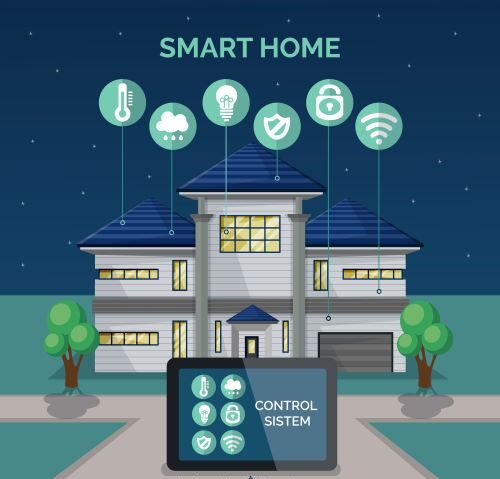Smart home automation or home automation is all about managing and controlling your home with just one click. It is one of the most anticipated applications of IoT (Internet of Things). Smart home automation facilitates a shift from manual work to automated operations with the network infrastructure connected to the internet. According to the survey carried out by Global Market Insights, $35 billion in revenue was recorded for home automation in 2022.
What is Smart Home Automation?
This system allows the remote control of various home components remotely or through voice commands. Smart home automation involves linking devices and appliances to a central hub or network manageable by smartphone, tablet, or voice-controlled assistant. It enables smooth interaction between various devices, resulting in seamless working.
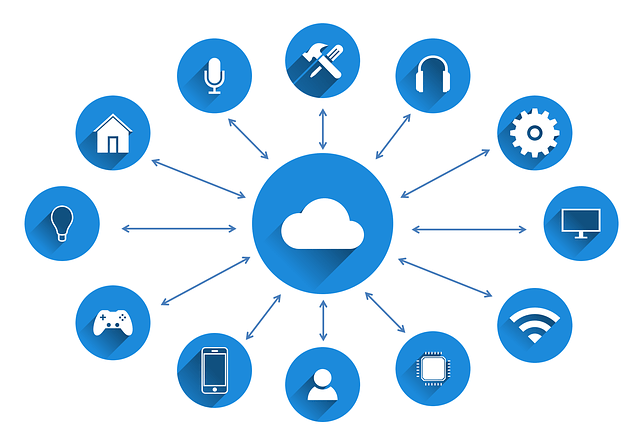
Smart home automation includes lighting systems, entertainment systems, security cameras, smart thermostats, door locks, and kitchen appliances. These instruments are programmable to perform specific tasks at specific schedules. Such smart homes can be set up using wired or wireless systems or even by integrating both.
Read more, 5 Amazing Smart Cities and Their Components.
Wired system: These systems are reliable and safe, making it difficult for hackers to get by. They are chosen for large renovations and big construction projects due to their scalability. Moreover, wired smart homes generally increase the resale values due to all the benefits. These systems also have drawbacks, such as massive installation costs, big spaces required for network equipment, and high maintenance expenses.
Wireless systems: These systems are less costlier compared to wired ones. They are easy to install, maintain, and control without any hassle. Wireless systems can transform your ordinary homes into state-of-the-art havens. Compact homes and rental properties are the ideal fit for such systems. It needs full and reliable Wi-Fi coverage and services. You also have to shield it using a VPN to prevent cyber attacks.
Read our article on How to Explore Cybersecurity Modes and Classes to learn everything about cybersecurity.
How does it work
Consider smart home automation as a tree. This tree holds tight due to its root which is a master home controller (also known as a smart home hub). Its branches expand to lights, automatic appliances, air conditioning, thermostats, security services, etc. The smart home hub understands and operates information facilitating wireless communication between various parts of the smart home automation system.
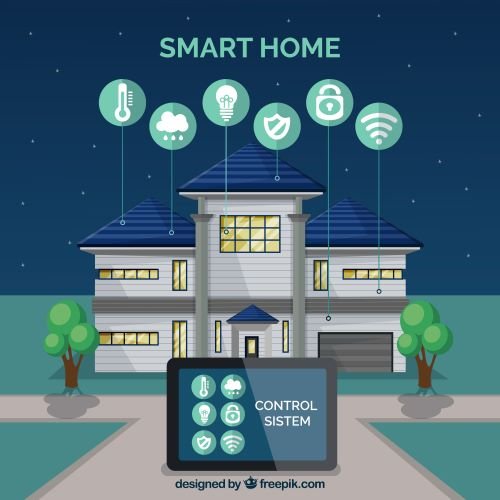
Just one app is capable of streamlining and consolidating the smart home data. With this innovative solution, people can manage their smart devices from anywhere, transforming living spaces into truly connected homes. A few examples of this cutting-edge technology include Amazon Echo, Google Home, and Wink Hub.
Connecting smart home products to the network can be done using Wi-Fi and Bluetooth, or by utilizing wireless protocols like Zigbee or Z-Wave. These protocols ensure a secure connection between devices within the smart home ecosystem. We can conveniently program devices to adhere to schedules and commands. Alternatively, we can use voice commands through Amazon Alexa or Google Assistant for instant control and ease.
Lighting System
Smart lighting is a great approach to managing lighting schedules that includes automatic light adjustment and modification according to the color temperature. The global smart lighting market is expected to reach $ 44 billion by 2030. Cisco, Honeywell, and Philips are some of the top players in this stream.
It is controllable through sensors, apps, or voice assistants. All we need to do is to set it up with Wi-Fi or Bluetooth. Wi-Fi-connected lighting is dependent on internet connectivity. If the internet is down, so is the smart lighting. On the other hand, Bluetooth-enabled lighting is functional as long as it is linked to Bluetooth on your phone. For that, a Bluetooth hub is necessary that controls Bluetooth connectivity on the phone.
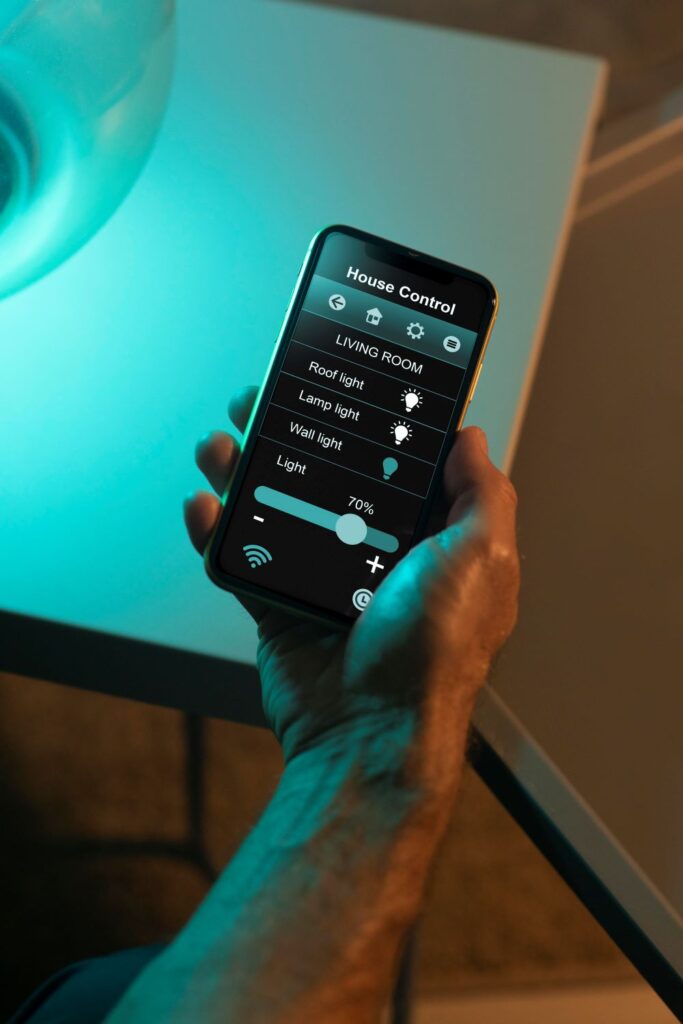
Advantages of smart lighting:
- These lights can be turned on and off depending on the usage. Additionally, they consume less energy than the normal bulbs. Hence, there will be significant savings in energy, a reduction in CO2 emissions, and affordable electricity bills. These lights can function for a long time as compared to standard lights.
- Smart lights can create a good ambiance by identifying various aspects of a room. You can also modify colors and intensity according to the mood to enjoy the vibe.
- Light scheduling is effortless with the ability to set timers. It is possible to automatically turn off lights at specific times.
Thermostat
Smart thermostats are more than just convenient devices for controlling a home’s temperature. In 2021, the smart thermostat market reached $ 2.6 billion, and it is supposed to go to $ 25.5 billion in 2030. Nest Labs, Inc., Honeywell International Inc., Ecobee, Inc., Emerson Electric Co., Schneider Electric SE, Tado GmbH, Control4 Corporation, etc., are some giants in manufacturing smart thermostats. When integrated with fire listening devices or smart smoke alarms, they can be crucial in ensuring safety. In the unfortunate event of a fire, these intelligent thermostats automatically shut off the HVAC system to prevent exacerbating the situation by circulating air. This proactive measure can go a long way in minimizing damage and safeguarding property from further harm during emergencies.
These devices are operable through Google Assistant, Alexa, and Apple’s Siri. We can also track energy and save electricity.
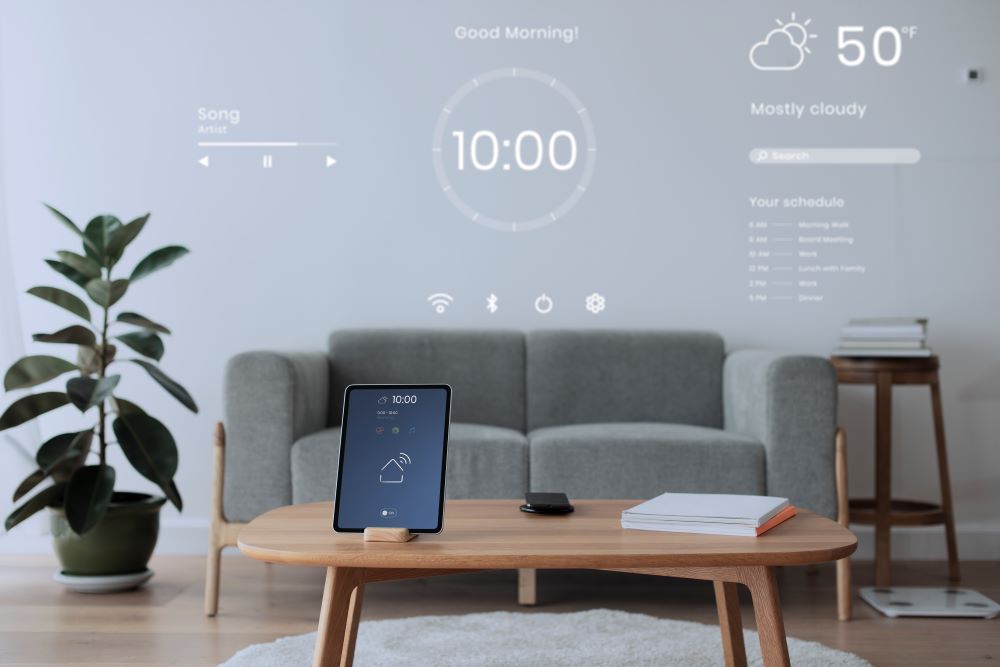
Door Locks
For the global smart lock market, $ 13 billion in revenue was recorded in 2022. Assa Abloy AB, DormaKaba Holding AG, Spectrum Brands Holdings, Inc., etc., are a few big names in this sector. Smart door locks can be accessed by using a smartphone. As a result, people can have complete control over who enters and exits their property from anywhere. This advanced technology allows for remote monitoring and ensures the safety of one’s home. Homeowners can easily grant virtual keys to family members, friends, and trusted service professionals. This added feature verifies complete control over who has access to the home at all times. These locks allow people to monitor door safety, make virtual keys, remote locking, and unlock.
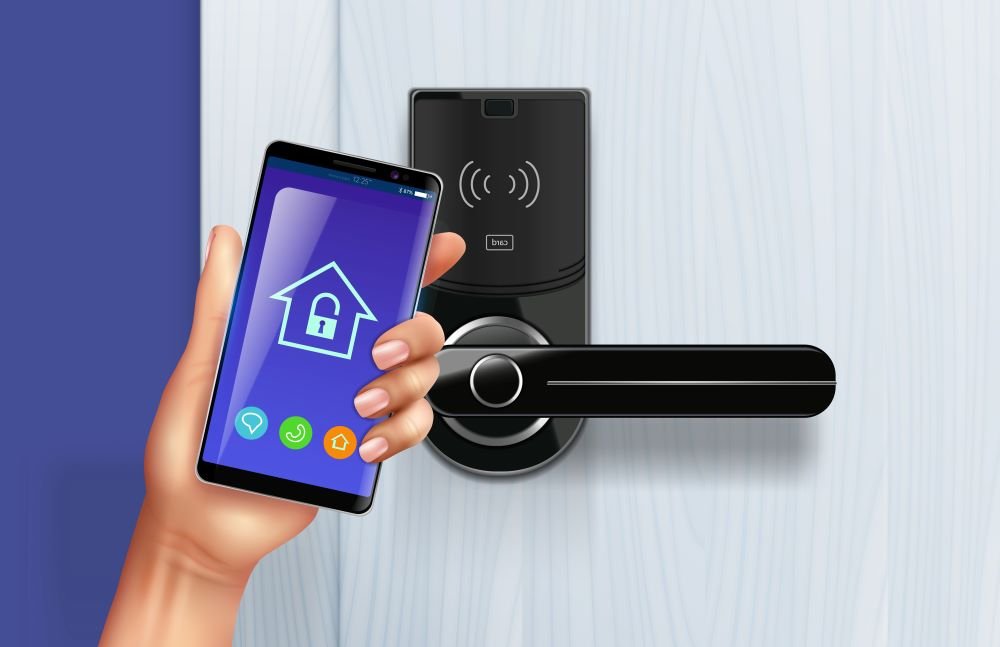
Security Camera
Thanks to advanced technology, residents now can keep a watchful eye on their homes even when they are away. Smart security cameras and doorbells, like the popular Ring brand allow users to monitor their properties remotely. These devices boast intelligent motion sensors that can accurately distinguish between residents, visitors, pets, and potential intruders. In the event of any suspicious activity, immediate notifications can be sent to authorities for prompt action. With these cutting-edge solutions in place, homeowners can confidently protect their homes and loved ones at all times.
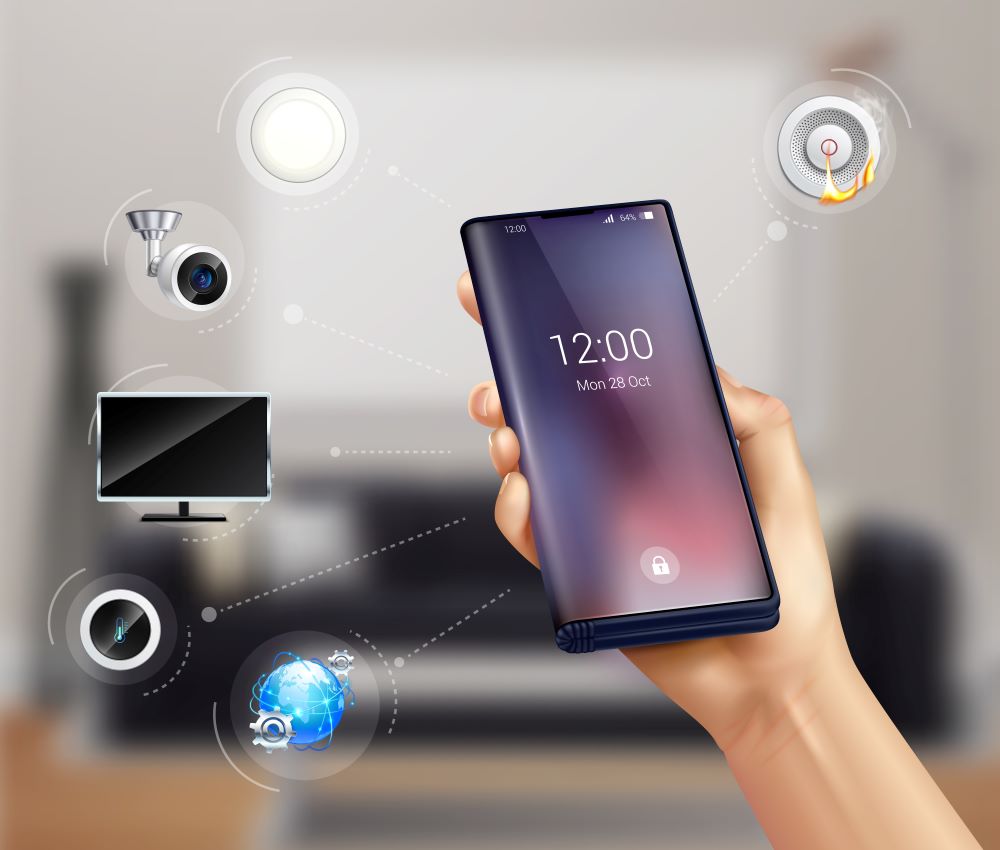
Axis Communications AB (Canon Inc.), Bosch Sicherheitssysteme GmbH, Eagle Eye Networks Inc., Hangzhou Hikvision Digital Technology Company Limited, Honeywell International Inc., etc., are the top companies in smart camera manufacturing.
Smart Kitchen Appliances
You’ll be amazed by the range of appliances available today, such as smart coffee makers that can brew a piping hot cup of joe at your desired time with just a simple program. Imagine never having to worry about forgetting the expiration dates on groceries again, thanks to smart refrigerators that keep track and even create useful shopping lists or suggest recipes based on what’s already in the kitchen. It’s the innovation that brings convenience and efficiency right to your fingertips!
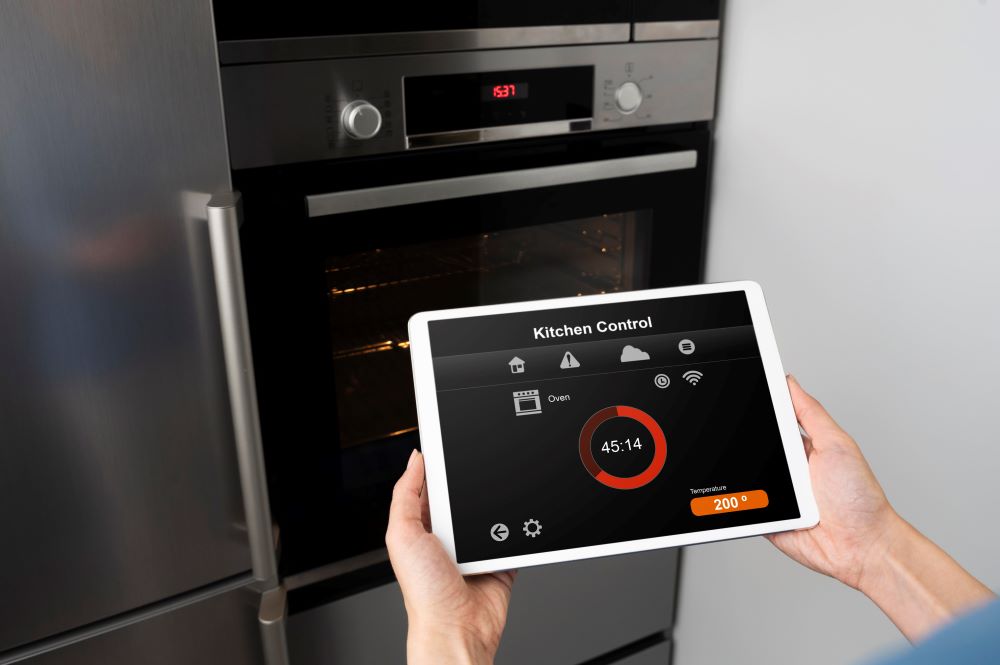
Smart appliances also include slow cookers and toasters in the kitchen; and, washing machines and dryers in the laundry room. Samsung Electronics Co. Ltd · Whirlpool Corporation · Electrolux AB · LG Electronics Inc., and Panasonic Corporation are considered the large groups manufacturing smart kitchen appliances.
Types of Sensors
Smart home automation include multiple sensors such as, motion sensors, fire detection sensors, moisture detection, etc.
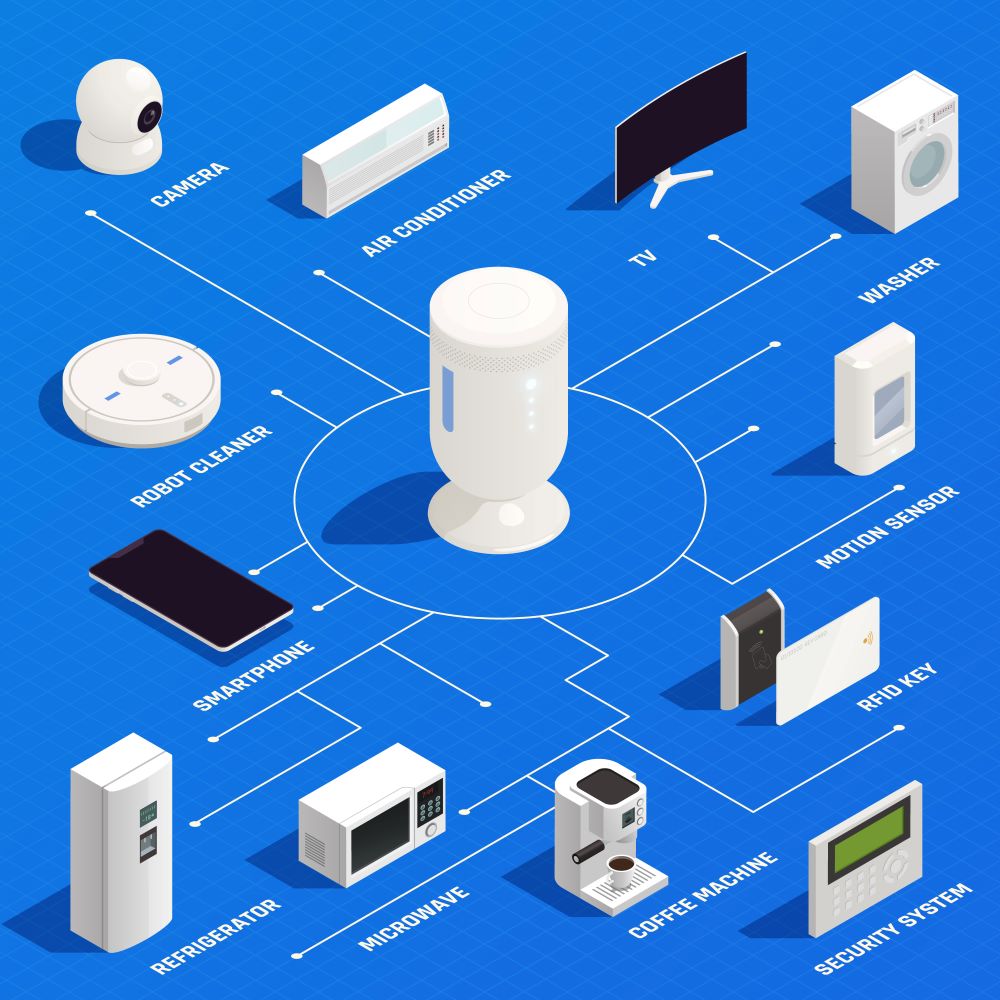
Fire/CO Detection
Fire detectors can sense early signs of smoke in homes and monitor air quality. Similarly, CO detectors can sense the CO level and alert people in case of danger. It acts as a lifesaver because CO is not easily detectable and is odorless. A few new sensors can recognize the presence of various pollutants such as soot, dust, pollen, particulates, etc.
Leak/Moisture Detection
With a moisture detection sensor, we can stay one step ahead of potential issues like frozen pipes or waterline breakages that pose a threat to the home. These reliable sensors will promptly notify you of any leaks, enabling you to take immediate action and prevent costly damage before it occurs. Invest in a moisture detection sensor for convenience and timely maintenance.
These sensors can be easily placed around different household appliances like water heaters, dishwashers, refrigerators, sinks, and sump pumps to prevent water leakage. This sensor promptly detects any unwanted water and immediately notifies the concerned person.
Motion Sensors
As the name suggests, these sensors sense movement and motion in the home. These sensors inform in case of unwanted movement at an unwanted time. Motion sensors are an excellent solution for conserving energy. By seamlessly connecting to the lighting system or thermostat, these sensors intelligently regulate energy consumption in a room according to its occupancy levels. This not only helps in reducing wastage but also promotes a greener and more sustainable environment.
If you want to know more about smart home automation, please write to us in the comment section.
